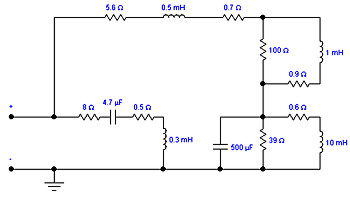I think SINAD will be “done” in the next 5-10 years. We still see bad products, but the AVR-X8500 broke the 100 barrier 5 years ago, and we are seeing great desktop DACs beyond the 120 dB range. A few product cycles from now, I can imagine products generally all doing well. SINAD will only be unimportant because everyone has stepped up.
Looking at our audibility threshold
Strict
Dynamic range, linearity, SINAD: 120 dB
THD, IMD, noise, crosstalk, jitter: -120 dBFS / 0.0001%
Frequency response, channel balance: ±0.1 dB
Output impedance: 0.16 ohms
Is there more crosstalk or IMD testing to be done?
1) we see that multitone noise patterns can vary with frequency. Some are flat, others spread wider as you go up in frequency.
Are there equal SINAD products with “vastly different” 32-tone results? Or does SINAD closely correlate with the 32 tone results?
2) The current 32 tone is evenly spaced 0 dB tones. Is there a difference if you have a mix of 0 and -10 dB tones?
3) what if you did a crosstalk test with 32 tones instead of a sweep? If you played 32 tones that were 1/6th octave shifted between the left and right, might be really interesting to see if there are differences.
Is there any benchmark optimization going on?
In the PC industry, once a benchmark is popular, time is spent optimizing around the benchmark even if it’s a single use case.
What if you did your dashboard at 500 Hz or 2kHz?
If you shifted the tones so they are not evenly spaced and “stress” the region of IMD humps, does it change?
Does output impedance/input impedance vary with frequency? At least when I look at Stereophile, for amplifiers, there is still a big non linearity when they look at frequency response in a simulated speaker load.
But that speaker load is reflective of 1995 speakers
As mentioned by two readers in this month's "Letters," amplifiers are used to drive loudspeakers but are almost exclusively measured into resistive loads. The reasons for this are twofold: 1) real loudspeakers both produce neighbor-annoying sound levels and tend to break when driven with typical...

www.stereophile.com
Would different speaker loads reflecting popular speakers today be any different?
—-
The next frontier is applying science to mixing and mastering

Modern mixes are compressing dynamic range so that it sounds good on phones and cars, but is that science? Or the same truth as cables and power conditioners? For all we know, in a formal, scientifically designed study, it may prove that you don’t need to compress dynamic range but instead have the car audio system or phone do a speaker specific EQ and speaker specific dynamic compression based upon performance characteristics.



